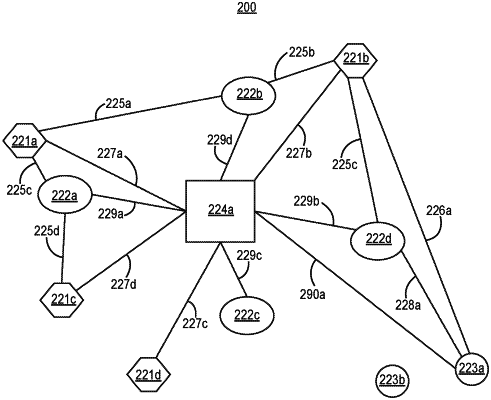| CPC H04W 72/0453 (2013.01) [H04W 16/14 (2013.01)] | 25 Claims |

|
1. A method of determining frequency channel assignments to radios, comprising:
creating a new network graph or modifying a previously existing network graph;
using the new or the modified network graph, determining an interference network graph, for radios authorized to transmit in shared spectrum, using a transmit power spectral density level and a frequency channel specifically requested by each radio, where the interference network graph comprises at least two nodes and at least one interference edge connecting two nodes, where each node comprises one or more radios operated by a same operator, and where each radio is a base station configured to communicate with user equipment;
determining a chromatic number, z, of the interference network graph;
determining, using the chromatic number, combinations or permutations of frequency channel mappings for a number of frequencies, n, that can be assigned to at least one radio in each node of the interference network graph;
for each frequency channel mapping of the determined combinations or permutations of the frequency channel mappings that can be assigned to the radios of different nodes, determining a maximum transmit power spectral density level that is allowable for all radios of each node so that an aggregate interference level at at least one protection point will not exceed an aggregate interference threshold level;
using a cost function, determining an assignment of frequency channels to radios of each node that results in at least one of: (a) an enhanced transmit power-bandwidth product or an enhanced probable transmit power-bandwidth product for all radios, (b) diminished interference between radios of the different nodes, and (c) diminishing changes to frequency channels either requested by or previously assigned to radios; and
assigning the determined assignment of frequency channels and corresponding resulting enhanced transmit power-bandwidth product levels or probable enhanced transmit power-bandwidth product levels to corresponding radios, where the radios are configured to operate on their assigned frequencies and to transmit at their assigned enhanced transmit power-bandwidth product levels or probable enhanced transmit power-bandwidth product levels.
|